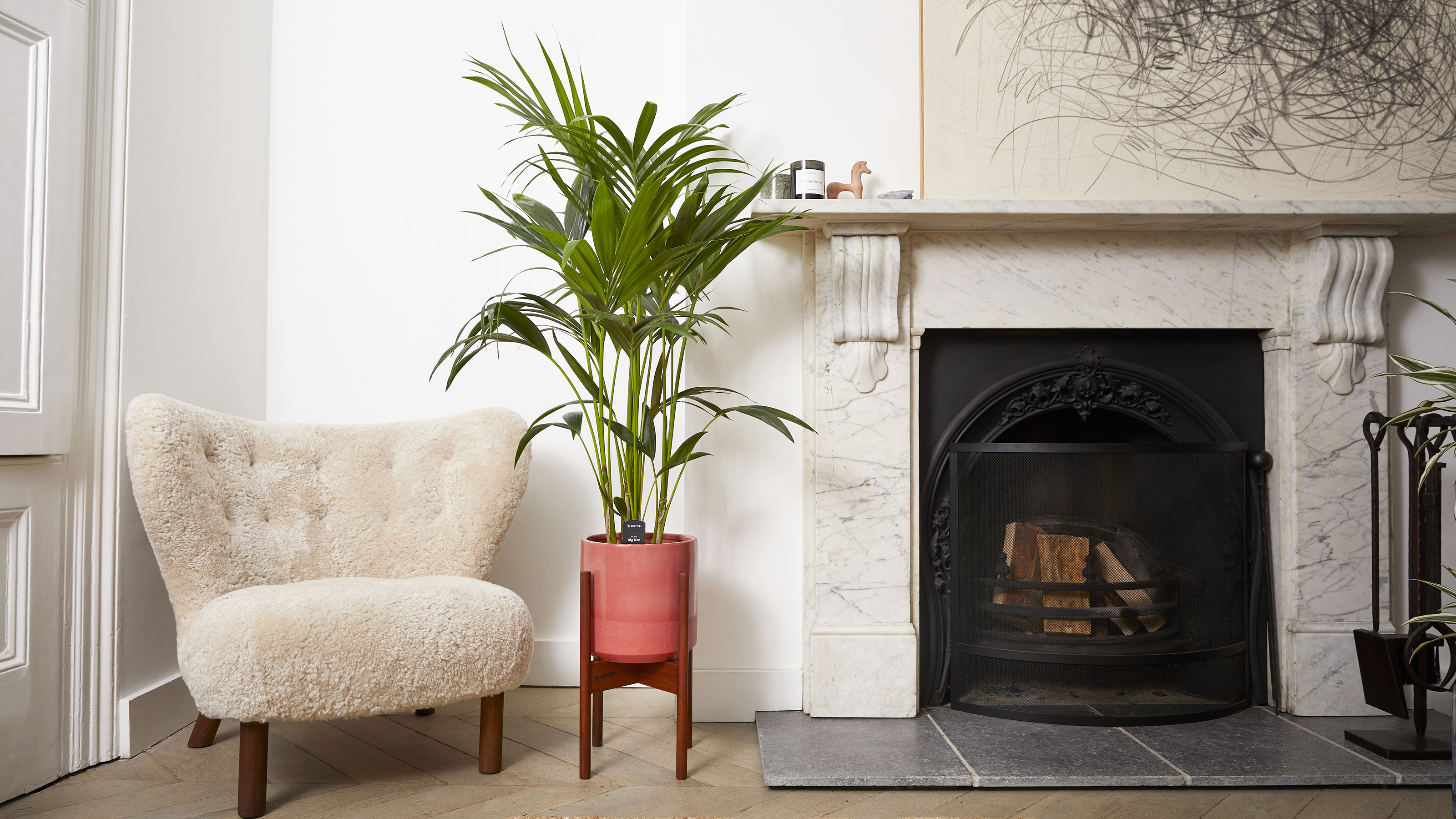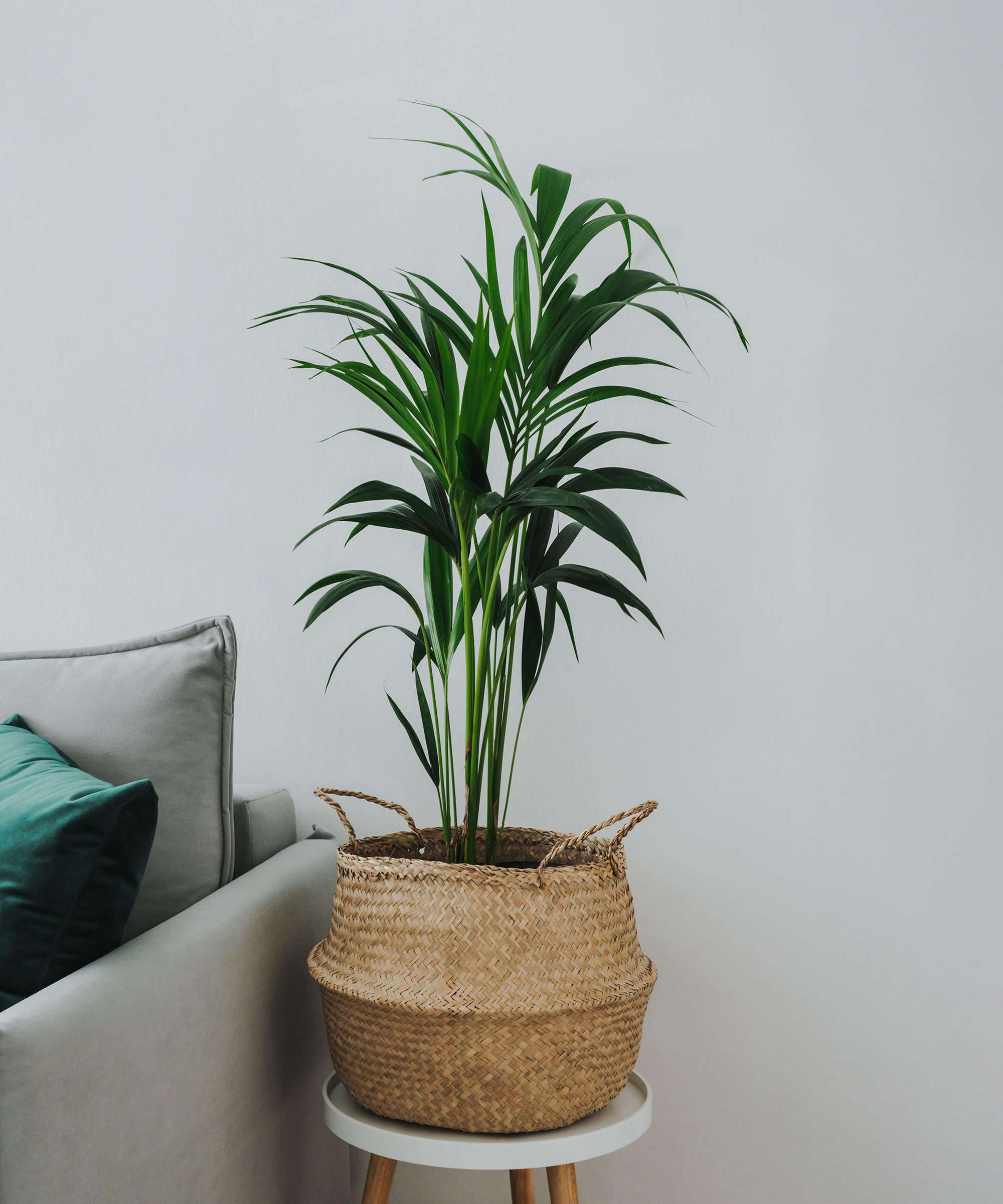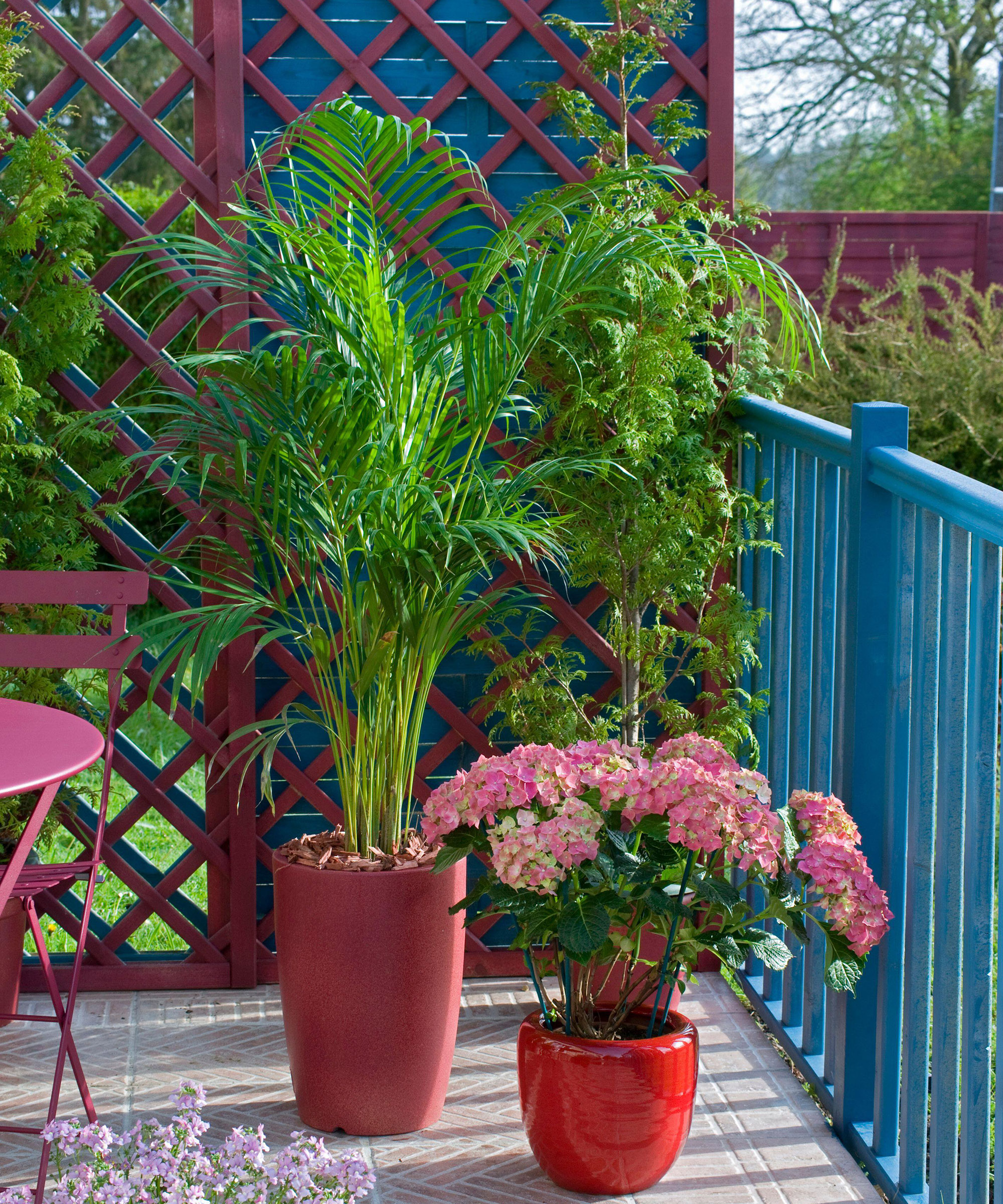Kentia palm care and growing guide: tips for these elegant indoor plants
Our kentia palm care tips will keep these regal indoor plants looking lush and beautiful all year round


Adding a touch of the tropics to your home is easy with a tall, elegant kentia palm (Howea forsteriana). This easy-to-grow plant is often recommended for those new to indoor gardening, since it copes well with some shade, and lower humidity levels and cooler temperatures than many other palms.
The kentia comes with impeccable credentials, too, and when first introduced to Europe in the 19th century from islands in the South Pacific, it was used to grace the fashionable palm courts of high-class hotels such as the Ritz – and it’s still used today. This beautiful palm was also Queen Victoria’s favorite and it took pride of place in all her palaces.
The kentia palm, also known as the sentry palm, thatch palm or paradise palm, needs space to show off its tall, arching stems of dark green, glossy fronds. However, it is slow growing, so if you want a large statement plant, buy a mature specimen. While younger plants can be displayed on a tabletop or sideboard, taller palms are generally best placed on the floor and used to introduce height and structure to an indoor plant display.
You can also combine it with a wide range of the best indoor plants, using its foliage as a cool, green backdrop to flowers that like similar conditions such as begonias, orchids and flamingo flowers (Anthurium andraeanum).
3 top tips for the best kentia palm care
Kentia palms are often mistaken for parlor palms (Chamaedorea elegans), which look very similar and are equally easy to grow – if you purchase the latter, simply follow the growing instructions below.
1. Give your kentia palm the right amount of feed and water
Kentias are not particularly thirsty plants and should only be watered when the top of the compost feels dry. Reduce watering in winter so the compost is just moist. Make sure your plant is in a pot with drainage holes in the base, and then place it in a waterproof container or on a deep saucer.
When watering, check that the compost never becomes soggy and waterlogged, which may lead to root rot. If the top of the compost is glistening with moisture a few hours after watering, tip away the excess from its waterproof pot or saucer to prevent disease setting in.
While Kentia palms can cope with low humidity levels, they will look healthier if you mist the foliage regularly, or set your plant on shallow tray filled with pebbles and topped up with water to create a humid atmosphere around it. Alternatively, keep it as one of the best plants for bathrooms or as a kitchen plant where humidity levels might be higher.
Make sure your kentia palm care includes a balanced liquid fertilizer every two or three weeks from spring to early fall.

2. Treat overwatered plants straight away
The Kentia palm suffers from few problems, but like many indoor plants, including the Swiss cheese plant, overwatering will result in root rot and yellow leaves, while the fronds may also turn yellow and wilt if the plant is underwatered. As with dracaenas, brown leaf tips can also be caused by too little humidity or water, or scorch if the plant is too close to a sunny window or heater.
If the compost feels bone dry, then underwatering may be the problem, so simply water it, taking care not to apply too much – also mist your plant to increase the humidity levels. Remove brown foliage if it is spoiling the look of your plant.
Overwatered palms need to be dried out, so check that your plant is in a container with drainage holes at the bottom and repot it if not. Then leave it to dry, only watering again when the top couple of inches of compost feels dry. However, if root rot, a common ailment of succulents, has already taken hold, it may be too late to rescue your plant and you will have to discard it since there is no cure.

3. Place them in the right light
Like the prayer plant, kentias like a cool area in the house that receives bright but indirect light, such as a few feet away from a window. Keep them out of direct sunlight, which will scorch their beautiful fronds. Kentias will cope as a low light indoor plant in darker corners, but may not grow quite as well as those given a little more light.
Like all palms, they enjoy some humidity, and will thrive in a bathroom or kitchen, if there is space, but any room in the house will provide a good home if you’re prepared to mist them regularly. So why not use it as an office plant to brighten up your work-from-home days. Also keep plants away from radiators and heaters.

Key problems with the kentia palm
Aside from the problems of overwatering outlined above, few pests trouble this palm. But some, including red spider mite, thrips and scale insects, may attack it. A healthy kentia palm care regime means your plant is less likely to succumb to pests, so aim to keep it in good condition, and check plants regularly, wiping off any insects you see on the leaves or stems to thwart an infestation.
Thrips are tiny little insects that jump around when you move the plant. They do little real damage to the palm and can be left untreated, although if you do want to learn how to get rid of thrips you can hang blue sticky strips designed to trap them in between the fronds.
Scale insects suck the sap from plants and look like small brown lumps on the leaves and stems. They can be removed by dipping a small paintbrush into methylated spirit and gently dabbing it on the pests. You may have to discard a heavily infested plant so treat these pests as soon as you see them.
You can also use spider mite spray for indoor plants from Amazon, or you may already own some for treating your fiddle leaf fig plants or your calathea.

How do you propagate kentia palms?
Kentia palms are divided by division as you would with a snake plant. When you buy a kentia palm in a pot, it will probably include a few individual plants that have been grouped together to give it a fuller appearance.
These stems can be carefully prized apart to create new plants, and dividing them in this way can bring new life to a palm that has become pot bound, when the roots are packed too tightly in their container, resulting in yellowing or lacklustre foliage.
Here's how to do it:
- The best time to divide a palm is in spring, just before it starts to grow again after its winter rest. Water the plant, then lay it down on an old dust sheet or newspaper, and check the bottom of the pot for roots coming through the drainage holes.
- Remove the plant from its pot – you may need to cut it away if a mass of roots are protruding from the base. Then carefully pull the individual stems apart or cut off stem sections, ensuring each has some roots attached.
- Discard any stems that look pale in color or dead, and repot the healthy sections in groups of two or three stems into new pots of fresh houseplant compost. Water the plants well and follow the care advice above.

Can kentia palms go outside?
In cold climes, these South Pacific natives will be happy tucked up amongst your indoor plant ideas for most of the year, but they can go outside during the summer months. They are able to tolerate temperatures just below freezing for a few hours but, long-term, they need a more temperate 50˚F (10˚C) or more. In warmer countries such as the southern states of the US, Australia and northern New Zealand, kentias can be grown outside all year round.

How big do kentia palms get?
These beautiful palms will give height to your indoor garden ideas, as they can attain a height and spread of 10x6ft (3x2m) or more, when grown in a large pot and given ideal conditions. However, if you buy a smaller plant, it may never reach this size, since they grow very slowly and keeping them in a container also limits their ambitions.

Zia Allaway is a garden book author, editor, and journalist, and writes for a range of gardening and women’s magazines, including Easy Gardens, Homes & Gardens and Livingetc, as well as The Guardian and The Daily Telegraph newspapers. She has also written books for the Royal Horticultural Society and Dorling Kindersley publishers, including Eco-Gardening, Compost, Low Maintenance, Practical House Plant Book, Practical Cactus & Succulent Book, Indoor Edible Garden, What Plant Where, and the Encyclopedia of Plants and Flowers.
